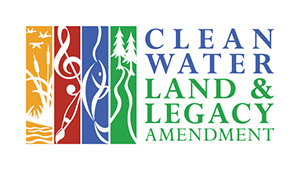The Norwegian-American Historical Association is home to an extensive manuscript collection that includes letters, diaries, journals and ledgers, newspaper clippings, obituaries, congregational records, family and local histories, and other resources related to Norwegians in America. The collection also includes photographs illustrating many aspects of Norwegian-American history.
The centennial of organized Norwegian migration provided an opportunity for Norwegian-Americans to celebrate their heritage and, more importantly, to demonstrate their American-ness. The celebrations, held in many North American cities and culminating in a major festival at the Minnesota State Fairgrounds in June 1925, showed how Norwegian-Americans had already contributed, as well as how well they fit in their new homes. The celebrations constituted a complex process of identity building and a tricky balancing of old culture and new.
Advertised as “The World’s Largest Gathering for 1925,” promoters described the Twin Cities celebration as “stupendous” and “monumental.” Events over the four-day period included speeches by Norwegian, Canadian, Icelandic, and American dignitaries, including U.S. President Calvin Coolidge; religious services; musical performances; displays of handcrafts, fine arts, and natural resources; and sporting events. The high point with a lavish “Pageant of the Northmen.” With a cast of 1,500, the melodramatic account of a thousand years of Norwegian history featured stories of heroic settlement, noteworthy individuals, and triumphs in the "new" world.
The Norse-American Centennial was a historical moment that brought national attention to Minnesota’s Norwegian immigrant community. To rapt attendees this was a cultural celebration, but behind the scenes the event challenged Norwegian-American leaders, intellectuals, and the broader Norwegian-American community to reexamine their heritage and role as Americans. One year prior to the celebration, the Johnson-Reed Immigration Act of 1924 harshly defined insiders and outsiders. While northern Europeans fared relatively well under the new quota system, many Norwegian-Americans seized this moment as an opportunity to elevate their status and dispute negative stereotypes within the minds of their fellow Americans.
The celebration was initiated by the general council of the bygdelag — local history clubs for Norwegian immigrants and their descendants organized by region of origin. The materials generated by the Norse-American Centennial, an association incorporated in 1925 in St. Paul, are rich and varied. The collection describes in detail the management of the celebration and gives data on observances outside of Minnesota, including Chicago, Canada, Boston, and Brooklyn. Letters and essays reveal the loyalty of Norwegian Americans to their cultural heritage, the rivalry among groups of Norwegians in America, and their internal struggles of understanding ethnic identity.
Funding to digitize a portion of the Norse-American Centennial papers provided to the Norwegian-American Historical Association through the Minnesota Arts and Cultural Heritage Fund, a component of the Minnesota Clean Water, Land and Legacy constitutional amendment, ratified by Minnesota voters in 2008.

Browse the Digital Materials
Search the Digital Materials
Browse the Collections
View the Finding Aid
